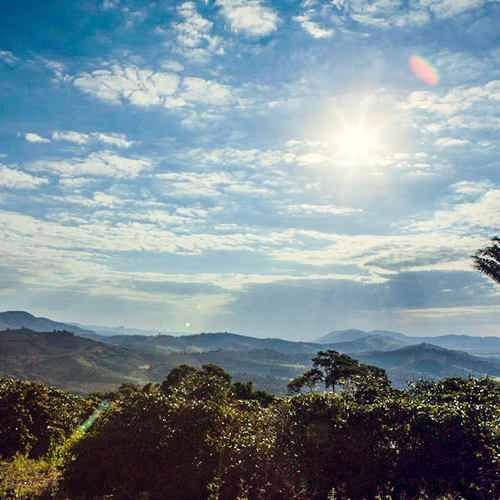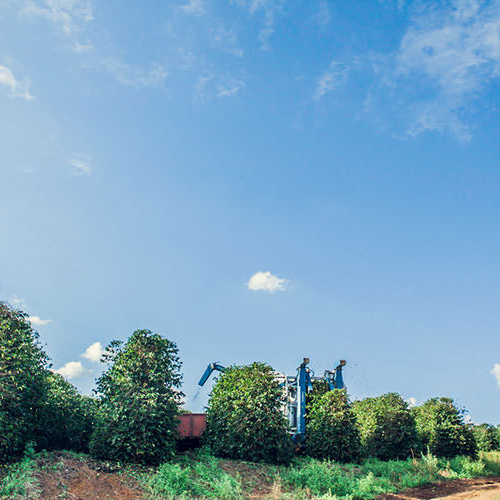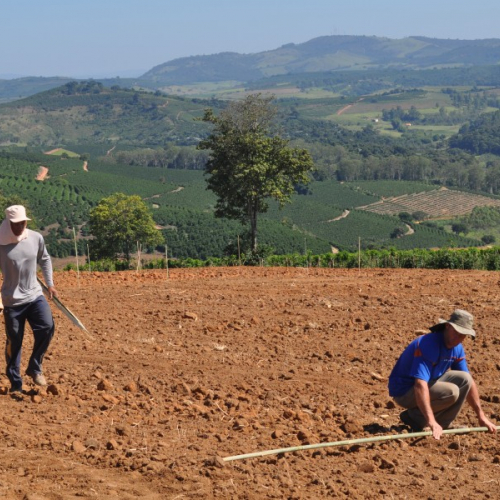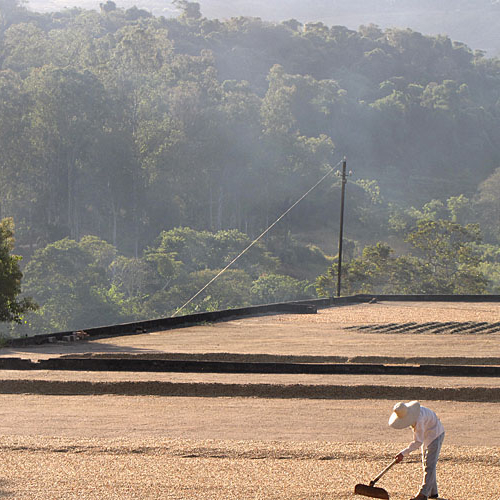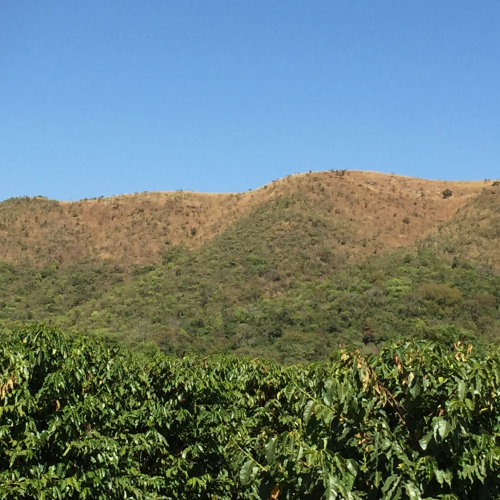Brazil
Did you know?
About
Brazil, in eastern South America, covers almost half of the continent - making it the world's fifth largest country - and borders ten countries as well as the Atlantic Ocean. The northwest contains the vast Amazon Basin, backed by the Guiana Highlands. The center west is largely a flat plateau of Savannah and rock escarpments.
The northeast is mostly semi-arid plateaux, while the east and south contain the rugged mountains and fertile valleys of the Brazilian Highlands and narrow, fertile coastal plains.
The Amazon basin is hot, humid, and wet; the rest of Brazil is cooler and drier, with seasonal variations. The northeast is drought prone. Most Brazilians live in urban areas along the coast and on the central plateau, mainly Sao Paulo, Rio de Janeiro, Belo Horizonte and Salvador. Brazil is well endowed with minerals and energy resources.
Brazil is the world's largest producer of coffee and a leading producer of sugar, cocoa, soya beans, corn and beef. Timber production and fishing are also important. Brazil is a major producer of iron, bauxite and manganese ores, zinc, copper, tin, gold as well as oil and coal. Manufacturing accounts for a quarter of the national income. Industrial products include food, machinery, iron, steel, textiles, cars, pharmaceuticals, chemicals, refined oil, metal products and paper products. The coffee market corresponds to 2% of Brazilian GDP.
The main exports are machinery, metallic ores, cars, metal products, coffee beans, soya products, electrical and electronic goods and orange juice. Despite its natural wealth and one of the worlds largest economies in the world, Brazil has a growing poverty gap. After the substantial growth on the beginning of this century, Brazilian economy has suffered with the political instability.
Both Arabica and Robusta
Whereas Brazil has always been the great Arabica supplier, Brazil is the second largest producer of Robusta, which represents around 20% of its production. As from the mid-nineties a large portion of the new plantings, especially in new coffee areas, were Robustas.
Brazil has always been perceived as a volume supplier, but in the last decade, the quality revolution has arrived in Brazil, and today is responsible for supplying around 4 million bags of high-quality coffee.
Nice to know
By far the largest producing country. On the export side, Vietnam is approaching Brazil. Will the Asian country will become the largest exporter in the next decade?
Brazil's crop and its huge local consumption are key factors in the global supply & demand landscape. The domestic consumption in Brazil is around 22 million bags and is expected to grow further, mainly in the quality side. Brazilian consummers had the habit of drinking low quality and dark roasted coffee, but this habit is being transformed.
The coffee plantations were the motor of Brazilian economy on the second half of the nineteenth and twentieth century. It had a big impact on Brazilian culture like the habbit of drinking a ''cafezinho'' in the ''padarias'', in the early morning or using the word coffee in many expressions of the language.
Brazilian coffee productivity had prospered with the mechanization which started on the late 90's and 2000. Today the machines are becoming more accessible and compact. Farmers are decreasing the cost of production and delay for finalizing the harvest, as the new machines can be used to harvest coffee in the mountains.
Coffee market in Brazil also face a lot of challenges: rising cost of the worforce, climate change and farmers succession are just some in the production side.
Historical peaks on the coffee price are linked to weather conditions in Brazil: frosts in 1975, 1985 and 1994 and drought in 2014.
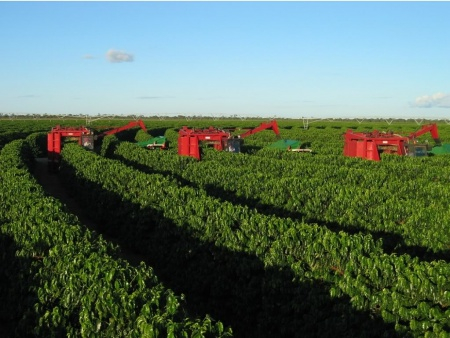
A tale
The story of coffee in Brazil begins with romance. In 1727 Countess d'Orvilliers, the wife of the Governor of French Guiana, gave some coffee berries to an admirer, Sergeant Major Francisco de Melo Palheta. Coffee was already the drink of fashion throughout Europe and King Louis XV of France planned to establish a monopoly by growing it exclusively in the French colonies. But Palheta, who was on an official mission to the Governor, had been given a cup of coffee to drink by the countess. He was so ecstatic in his praise of the coffee - and keen to learn more about the coffee plant - that the Countess took him to visit a coffee plantation. There she gave Palheta the precious gift of coffee berries. With his gift and a thousand seeds and some cuttings, Palheta returned to his homeland, Brazil, where the coffee plant was to find its natural home.The first coffee trees were cultivated in the mountainous region outside the city of Rio de Janeiro, close to Minas Gerais. Today, the region does not cultivate coffee anymore and the main income is tourism. Suprisingly, after being cultivated in Rio, coffee trees were cultivated in São Paulo region, only after these two cycles it was cultivated in Minas Gerais.
Coffee facts
Bags of 60 kg
Crop periods
Flowering Period |
|
Main : From August until September |
|
Secondary : From October until November |
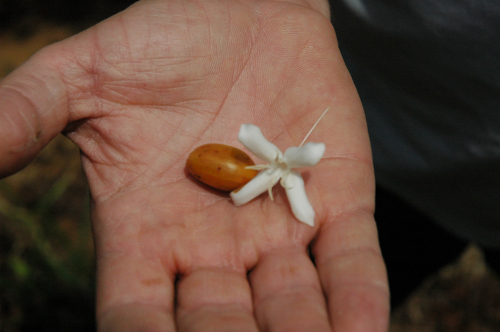
Although the main and most common flowering period occurs between August and September, there can also be a second one between October and November. This will happen if coffee is exposed to overly dry conditions (drought) before the flowering season.
Harvesting Period |
|
Main : From May until November |
Harvesting of the conillon robusta's starts about a month earlier and finishes a month earlier as well than the arabica harvest.
Shipping Period |
|
Main : From September until May |
First shipments arriving in Europe on September and October. The best Months to receive Brazilian are coffee in Europe are from November until March
Transit Days
|
Port of Shipment |
Imp. |
EU |
US |
|
Santos (1) |
53% |
21 |
10 |
|
Rio de Janeiro |
15% |
19 |
9 |
|
Vitoria |
30% |
19 |
9 |
|
Paranagua |
1% |
30 |
32 |
|
Salvador |
1% | 15 | 20 |
(1) About Port Santos :
Santos is the largest port in South America and its importance is still increasing due to modernisation &. It is also worth mentioning that it has pollution problems creating a risk of coffee being contaminated with odours during the shipping process. This even more so if shipments are delayed and coffee remains in the port for an extended time.
Coffee stuffed in dry-ports, such as Varginha, are also exported through the Port of Santos. Those exports represent today a small share of the total coffee exports but are growing rapidly.
Destination countries
1. USA
2. Germany
3. Italy
ICO Figures
Classifications
Varieties
Typical varieties in Brazil are Mundo Novo, Catuai, Caturra, Bourbon, Catucai, Acaiá and Obatã
By region
The various regions have their own characteristics due to the diversity in soils, weather patterns, workforce needed,...
The most commonly used regional denominations are Cerrado, Santos, Sul de Minas, Parana, Poços de Caldas, Mogiana, Bahia (for washed coffees) and Rio/Minas (for riado coffees)
Robusta produced in Brazil is called Conillon.
Geographically spoken, the coffee regions are:
Minas Gerais
The largest producing state can be divided into 4 regions:
South of Minas ("Sul de Minas")
A region of small farms, produce some 8 to 10 million bags of mountain grown coffee. Good altitude, rugged landscape and a favourable climate for planting coffee with rains concentrated in the months in which the fruit develops and with dry weather in the harvest months.
Cerrado
Coffee growing in the Savanna is a victory for Brazilian coffee technology. The Savanna is a sparse area that was progressively occupied by big coffee plantations that use high technology. The climate is that of a high plateau. As the seasons are well defined, the fruit ripens evenly, and there is practically no rain at harvest time. The savanna coffees are processed using the natural system, and there is today a greater trend for hulled coffee berries.
Matas de Minas:
Located in the Zona da Mata region is located at the border with Rio de Janeiro State. Is the largest producer of Rio Minas coffee.
Minas Chapada:
In the north of the state, a small region but one that produces high quality hulled coffee.
São Paulo
Divided into 2 main regions of production:
Mogiana
A region very similar to the neighbouring South of Minas. Its coffee growing is spread amongst brush, pastures and other crops. There are an important number of coffee growing families in this area, some operating in large traditional farms while others in smaller more modernised ones. The use of modern technology mixed with mountain coffee culture yields a hulled coffee of the highest quality.
Center-West (Garça, Marilia and Piraju)
Coffee production in this region is done on large farms using the traditional production system. Although production seems to be decreasing, there is a greater interest in the production of hulled coffees of better quality.
Espírito Santo
The State is divided into two regions, the north producing Robusta (conillon capixaba) on both large and small farms and the west producing typical mountain coffees on usually smaller properties along Minas Gerais border. Both hulled and natural coffees are produced in this region.
Paraná
This state, which used to be the second largest producer of coffee in Brazil, has today its own technology for production.
After seeing its coffee crops decimated by frequent frosts, the producers from Paraná developed a new "Close Planting system". Now with a greater number of plants per hectare the trees are not only better protected from cold winds but also ensure a more regular crop production.
Bahia
This state, with its varied climate, produces coffee in three different sub-regions:
South Bahia (Sul da Bahia):
Produces mainly Robusta coffee on large farms
Chapada (Planalto da Bahia):
A region located in the center of Bahia, mainly produces Arabica coffees. The predominant processing system here is hulling.
Bahia Cerrado:
This region located to the west of Bahia can easily be considered the new frontier of Brazilian coffee growing. Modern technology is widely used for both irrigation and harvesting methods. The following three kinds of coffee are produced in this region: Natural, Peeled and Hulled Berry.
Rondônia
This state produces mainly Robusta coffee. And is situated in the heart of Amazon region.
By screensize
In order to determine bean size, coffee is filtered through a perforated screen.
1. Screen sizes vary from screen 20 (very large bean) to screen 9 (small peaberry bean).
2. Each screen size is equal to 1/64th of an inch.
3. Bean size can be referred to either by screen size (ex: screen 17) or by name (ex. Large bean).
The table of conversion below illustrates terms used in describing sizes of coffee beans.
|
Flat bean |
|
|
Screen 20 |
Very large bean |
|
Screen 19 |
Extra large bean |
|
Screen 18 |
Large bean |
|
Screen 17 |
Bold bean |
|
Screen 16 |
Good bean |
|
Screen 15 |
Medium bean |
|
Screen 14/13 |
Small bean |
|
|
|
|
Screen 12 |
Large bean |
|
Screen 11 |
Good to large bean |
|
Screen 10/11 |
Good bean |
|
Screen 10 |
Small to medium bean |
|
Screen 9 |
Small bean |
Screening should be done as follows : move the coffee 3 times around by making circular movements followed by one gentle hit against the side of the screen.
For robusta : the grades usually used for conillion are :
-
4/5 (screen 14 to 17+)
-
5/6 (as of screen 13 )
-
6 (as of screen 12)
By defects
|
||||||||||||||||||||||||||||||||||||||||||||||||||||||||||||||||||||||||||||||||||||||||||||||||||||||||||||||
By colour, roast and preparation
dry or natural method wet method
fine, good, fair, poor |
Processing
Processing
|
Picking |
handpicking, handstripping & machine stripping |
|
Washing |
mostly unwashed |
|
Fermentation |
for the washed coffees |
|
Drying |
mostly in mechanical dryers and in the sun |
|
Sorting |
mechanical & electronic |
Great part of the coffee is not washed or fermented. With only one passing, the coffee is picked, spread in patios for drying and finally carried to the dry mill. We estimate as 15% the amount of washed Arabicas in Brazil, which represents 4.5 million bags.
Picking
The almost industrial concept of many of the larger farms and relatively accessible terrains make it possible to harvest mechanically on the modern plantations.
There are two types of machines to do this: one is similar to the machines used for harvesting olives and is merely shaking the trees. The other kind is a stripping machine: stripping the branches completely and thus mixing ripe with unripe beans as well as leaves and twigs. This machine is used only for Robusta
This stripping imitates the way the hand-picking is done in Brazil; contrary to other producing countries where only ripe beans are picked upon several visits to the same tree.
Local engineers had also developed the "derriçadeiras''. A compacted machine formed by a motor and a mechanical arm carried by the picker. This machine allows pickers to triple their efficiency and increase their income.
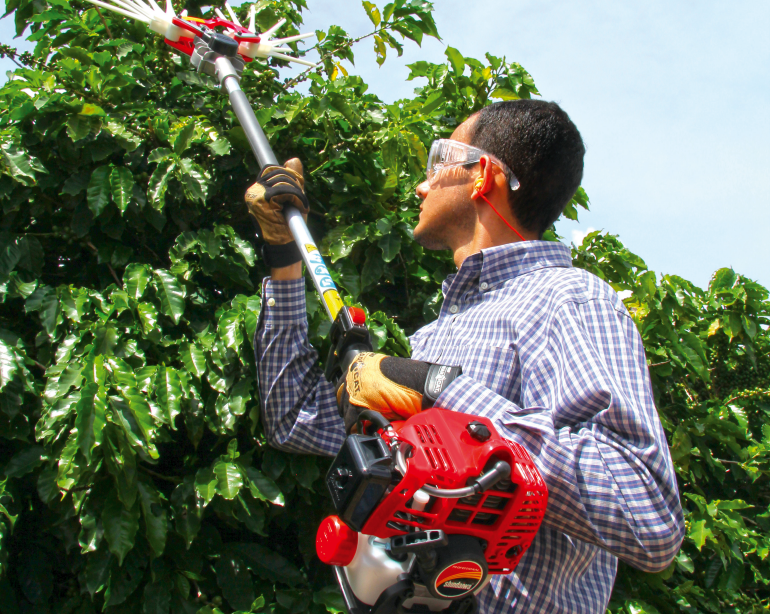
Washing
We see more and more efforts to develop washed coffees. Results sofar are not stable due to lack of experience in the preparation.
Also lack of altitude and absence of the fermentation process prevents them from producing a top notch washed coffee.
Nice to know
Brazil is one of the very few countries where cherries are stripped from the branches rather than picked. Ripe and unripe beans are collected at the same time.
Coffee Environment
A considerable percentage of the crop is produced by large scale industrial farms. These producers are well capitalized, more so, since they benefited from the high coffee prices the last years, mainly due to a devaluation of Real. Brazilian coffee farms tend to be large, sometimes containing more than a million, if not millions, of trees. These farms can be, in some cases, self-contained little villages,they provide a reasonably good living standard for the farm workers, even if these villages are becoming more and more rare with the time.
The mechanization process in Brazilian farms has resulted in an exodus of rural workers to nearby cities or even the big metropolis. Labour force coming from northeastern states is intensified by migrating labor during the harvest season to help bring in the crop.
During the harvest season, it is particularly interesting to see Brazilian 'Classifiers' (Coffee tasters/cuppers) working intensively to classify coffee in the offices of exporters. Some offices can have as many as 15 rotating cupping tables with 'Classifiers' continuously tasting the various coffees which have been brought in and grading them according to qualities observed. The continuous activity and constant slurping of these people at work can be a truly amazing experience to see, especially at the peak of the harvest season.
Most exporters in Brazil have a tendency to overexpose themselves by aggressively offering forward contracts. This, more often then not, tends to lead to frequent struggles to get required volumes of coffee, on time, from the producers. The high internal consumption, the influence of the "at times" volatile Real-rate and the local coffee-exchange (Bolsa) result in a domestic market that leads a life of its own.
There used to be a time when Brazil had two exporting associations (ABECAFÉ) Association of Brazilian Coffee Exporters & FEBEC - Federation of Brazilian Coffee Exporters. They are united in Cecafe.

